Growing Hyssop in Your Garden (+ A Simple Tea Recipe)
Learn everything you need to know about growing hyssop. This hardy herb supports pollinators, is easy to care for, and makes a soothing congestion tea.

I’ll be honest—hyssop doesn’t get the fanfare it deserves. It isn’t flashy like echinacea or trendy like lavender, but if you want hard-working herbs that earn their keep, hyssop has earned a permanent spot in my garden.
Wondering if it will take over your beds? Quick answer: it doesn’t spread by runners like mint, but it can reseed if it’s happy. I’ll show you how to keep it in bounds, what to plant alongside it, and a few easy ways to use it—tea included.
What Exactly Is Hyssop?
Hyssop is a perennial mint family herb with woody lower stems, narrow leaves, and spiky blooms in purple, blue, pink, or white. Once it’s settled, it’s tough, drought-tolerant, and doesn’t ask for much beyond sun and drainage. Bees pile onto it, and you’ll see butterflies and the occasional hummingbird, too.
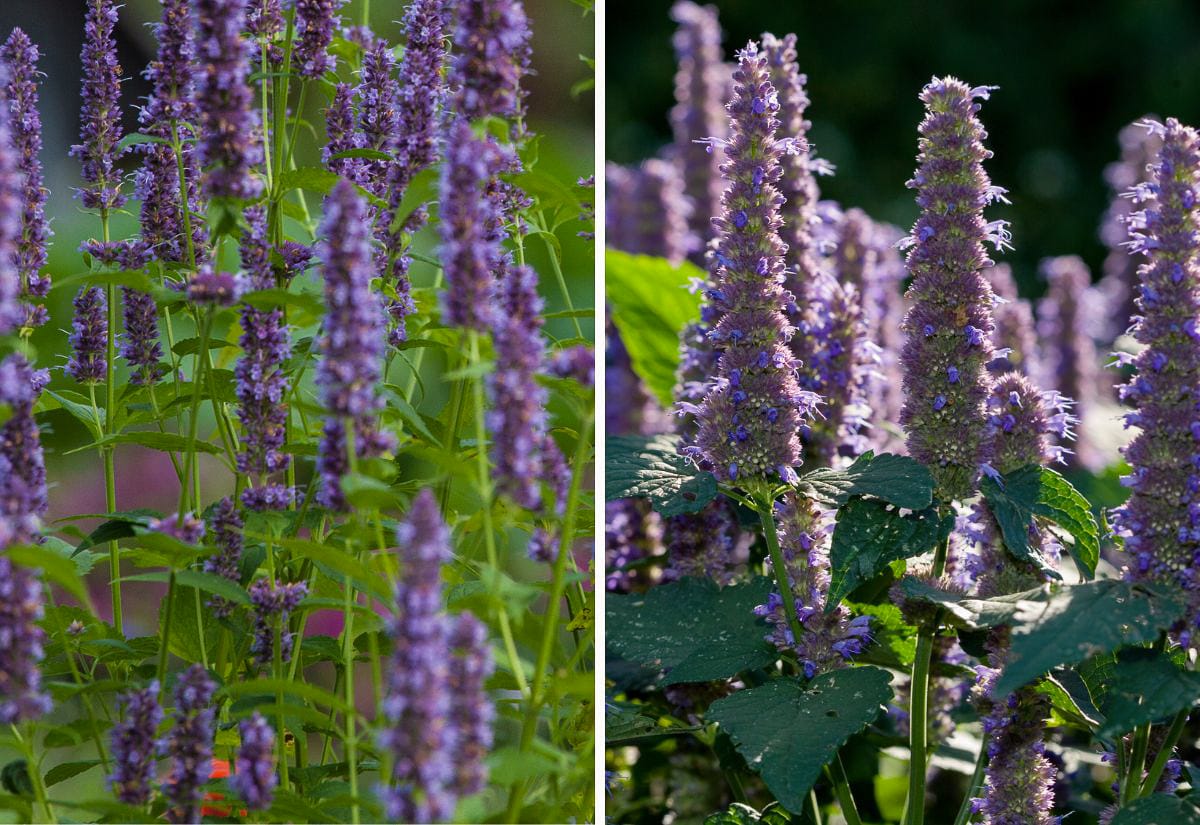
Why I Make Room for Hyssop in My Garden (And Why You Might, Too)
Let’s talk about the practical reasons I keep hyssop around and why you might want to make room for it as well.
It’s Practically a Pollinator Magnet
One of the biggest reasons I grow hyssop is how it pulls in the pollinators. I’m talking bees, butterflies, even the occasional hummingbird. Every bee helps, and hyssop seems to pull them in by the dozen. I notice it most when the cucumbers start setting fruit.
Plus, the more bees hanging around my hyssop, the more they’ll wander over to the squash and cucumbers nearby. Win-win.

It’s Got a Long History of Medicinal Use
Folks have been using hyssop for coughs and sore throats for generations. Around here, it usually shows up as tea to ease a cough, soothe a sore throat, or settle digestion. It’s a handy herb to have on hand, especially if you lean toward natural remedies.
If you’re pregnant, nursing, or managing a condition, check with your provider before using any herb medicinally.
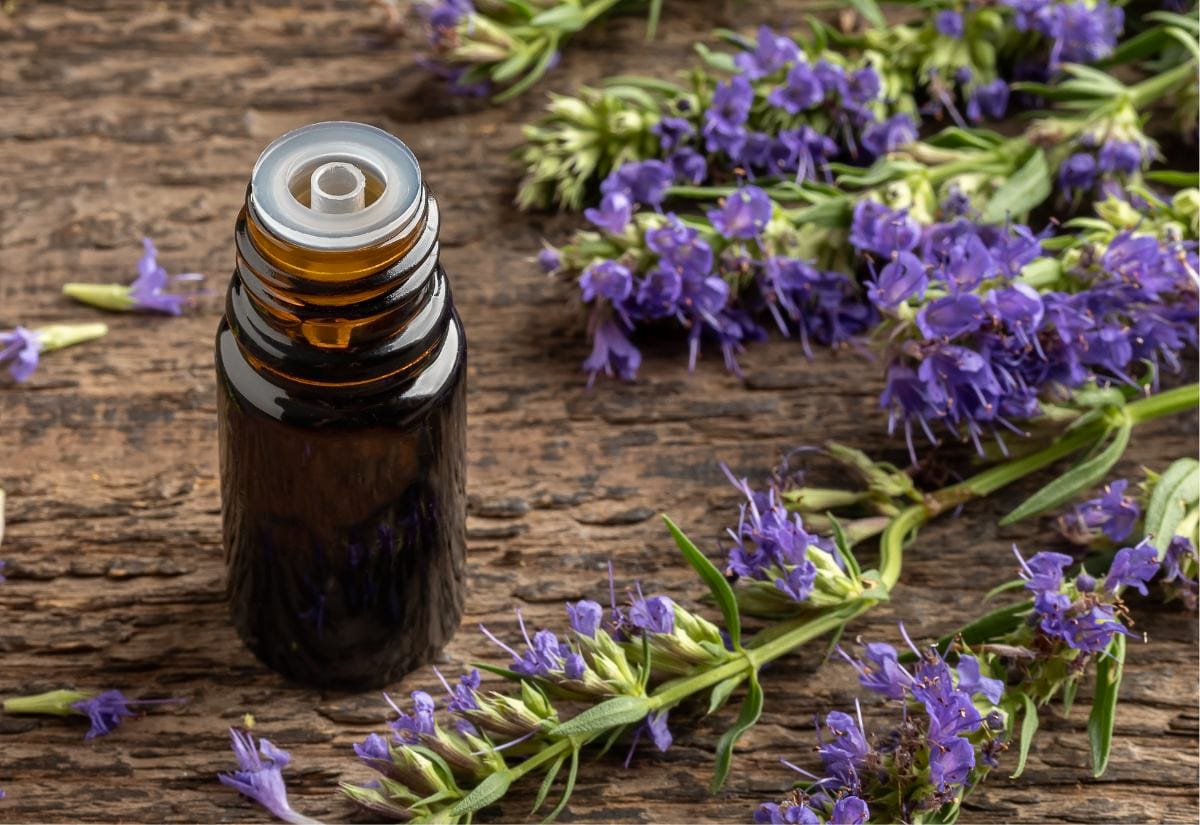
It’s Culinary, If You’re Into That Sort of Thing
Truth be told, I don’t reach for hyssop often in the kitchen, but it’s got a place. The leaves and flowers have a minty, slightly bitter flavor that works well in small amounts. Some folks use it to infuse honey or vinegar, flavor liqueurs, or even add a little something extra to roasted meats.
To me, it’s like a cross between mint and thyme, only with a sharper edge. Honestly, it’s not my go-to in the kitchen, but a little in honey or vinegar can surprise you.
It’s Low-Maintenance and Pretty, Too
Once hyssop settles into your garden, it’s easy to care for. It prefers well-drained soil and lots of sunshine but doesn’t need babying. It holds its shape, doesn’t flop all over the place, and adds a nice vertical element with those tall flower spikes.
I’ve found it fits right in alongside other herbs like sage and thyme—low-key and tidy.
Care & Quick Facts
Here’s the quick and dirty version from my garden.
Sun: Full sun—six hours or more if you can swing it.
Soil: Well-drained; sandy or gritty mixes shine.
Water: Don’t baby it. Let the top inch of soil dry out before watering again.
Size: Most varieties mature around 18–24 inches tall and about as wide.
Containers: Yes—use a pot 12 inches+ with excellent drainage. A gritty herb mix (or potting soil cut with coarse sand/perlite) helps prevent winter rot.
USDA Zones: Commonly hardy in Zones 4–9 (double-check your specific variety and local microclimate).
Propagation & Overwintering
Here’s what’s worked for me over the years.
Division: Split established clumps in spring every 2–3 years to refresh growth.
Cuttings: Root softwood cuttings in late spring/early summer; keep evenly moist until established.
Self-Sowing: If you want volunteers, let a few flowers set seed; deadhead to keep it contained.
Winter Care: In colder zones, a light mulch protects roots. For container plants, move pots to a sheltered, well-drained spot and keep soil just barely moist—never waterlogged.
Heads up: True hyssop (Hyssopus officinalis) and anise hyssop (Agastache foeniculum) aren’t the same; flavors and flowers differ, but basic care is similar. Use the tips above for either, then tailor to your specific cultivar.
If you’re looking for more plants that work just as hard as hyssop, you might enjoy this post on how to improve your garden with permaculture herbs.
Questions You Might Have About Growing Hyssop
If you’re thinking about adding hyssop, here are the questions I get most often.
Put Your Hyssop to Work: Congestion Tea Recipe
One of my favorite ways to put my homegrown hyssop to use is this simple tea for congestion. It’s easy to make, comforting when you’re run down, and one more reason I keep old-fashioned herbs like this around. I also love having other simple remedies on hand when cold season hits. If you do too, you might appreciate this recipe for the best homemade cough medicine using simple pantry staples.
Here’s how I make it:
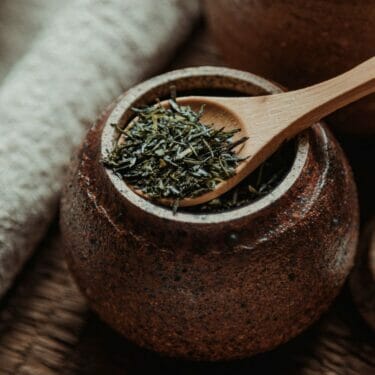
Hyssop Congestion Tea
This post may contain paid links. If you make a purchase using the links in this recipe, I may earn a commission.
Equipment
- Tea Infusing Spoon optional
Instructions
- Bring water to a boil.8 oz. Water
- Add the dried hyssop (or fresh if you’ve got it) to a tea ball, strainer, or just toss it straight into your mug.1 tbsp. Hyssop (dried)
- Pour boiling water over the herbs, cover, and let it steep about 10 minutes so it really draws out the flavor and goodness.
- Strain if needed, hen add honey and lemon to taste. I usually do (it makes the tea feel a lot more comforting).1 tbsp. Raw Honey, 1 tsp. Lemon
Notes
Nutrition
Love this kind of practical, real-life garden advice? Save this post on Pinterest so you can find it again when you need it!
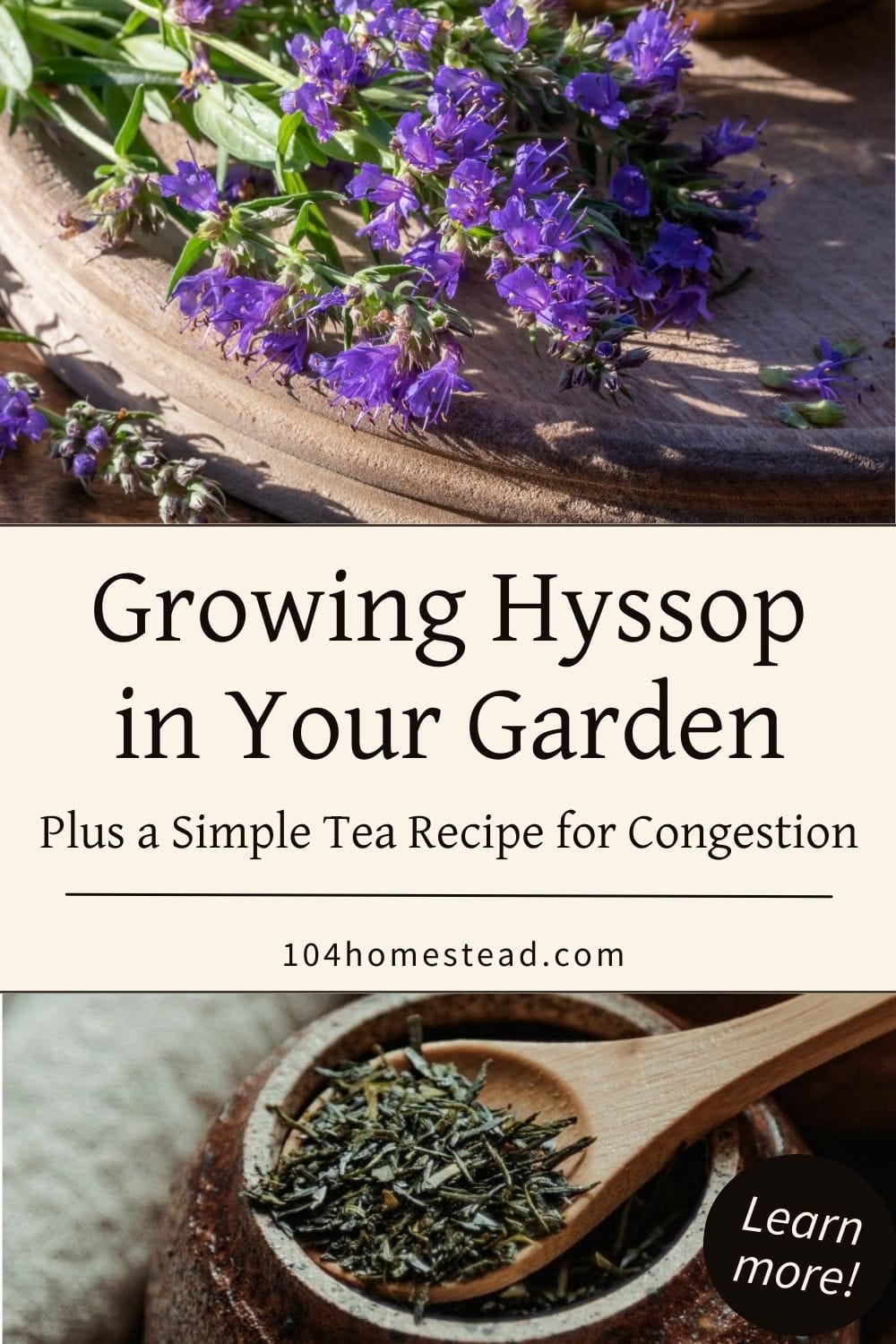
So yeah, hyssop’s a keeper. Year after year it shows up, does its job, and hardly asks for anything. It feeds the pollinators and gives me a little medicine when I need it.
If you’ve got a sunny spot and you like plants that work as hard as you do, hyssop is worth a look.
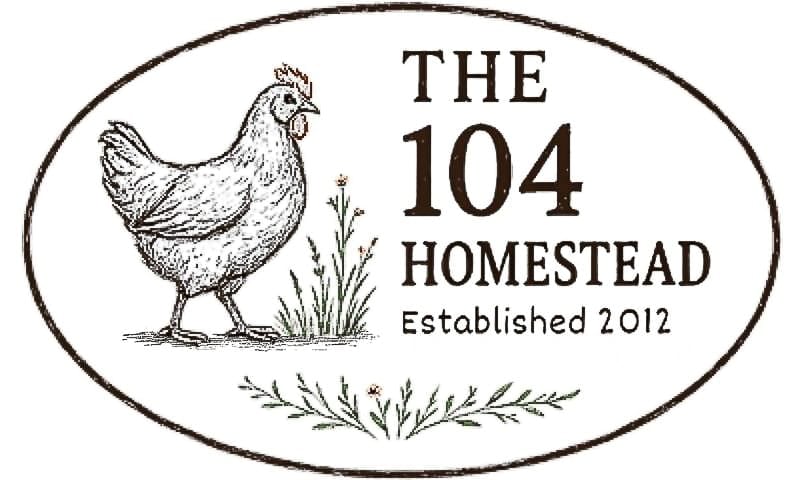
HairTransplantation is just a hair recovery procedure performed by adult males & Women that
possess significant hair loss, thinning hair or bald patches at which hair not grows.
? why is this here?
This was most interesting and I am looking forward to planting Hyssop! Comments were fun to read, too
Last year I moved into a house with clumps of hyssop taking up a three foot square expanse of the front garden. I love the fact that it attracts the bees and butterflies, but would like to plant other pollinators in the garden. However ti appears to take over and I’m afraid it will overtake newly established plants. It is also coming up here and there in other areas of the yard. Any ideas on how to control it? Thanks so much for any insights.
If you are willing to mail them I’ll happily take some of those hyssop bushes off of your hands. Send me a text at 843-860-5681 & I can walk you through digging them up & prepping them for the mail. I’m totally willing to costs.
I got super lucky one day and stumbled upon hyssop plants being sold and I immediately knew what I was looking at! Naturally I scooped up two, I probably should’ve got four lol But this was a few years ago and now they are huge! They are my favorite part of my garden because they are big, bushy and they smell terrific. They attract bumble bees ? and butterflies ? and that makes me happy because we need to keep the pollinators happy and abundant. Best parts is I get an ongoing supply to dry out and use for tea. I’m actually drinking some now because I’ve got a bellyache. I went strait to my tea supply and made up a mixture of hyysop, spearmint and slippery elm bark. It’s so nice to have things on hand that are natural and homegrown.
Hello. I love to learn new herbs that help with health naturally. The minute I read “ads flavor to Absinthe” I knew that this is an herb I will definitely try to grow myself. I will check back and read your new articles and will tell about you to many of my friends. Again thank you.
Your article is very good, your article gives me a great source of inspiration and information. But reading the comments below I am a little confused because the opinions are quite different.
I love to pull a few leaves of my hyssop and crush them in my hands and just breathe it in! I use the leaves most often for teas as they are available year round. I also make sure to label my herbs with their Latin names. Common names of herbs can be very confusing sinse many have the same name.
I went through the same confusing name game with Vervain, Verbena, and Aloysia Citrodora which are all called verbena.
Hyssop can also be used as a small hedge in a formal garden in place of the usual box hedge.
I grow hyssop in my garden and I love the fragrance. Sometimes when I want to freshen the air in my kitchen, I pour some boiling water over a few fresh hyssop sprigs in a bowl, and it smells so lovely and fresh. I originally planted it because I had heard the flowers and leaves have wound healing properties, so I wanted to include it in my homemade healing salve (which I did do, but haven’t had a chance to test it yet).
Hyssop is also has a wonderful fragrance that will envelope your garden! It’s lovely, and grows quite tall. So planting it behind shorter plants would be best!
I am a little confused… first it says to get the true variety for medicinal uses and then says to gather seeds from wild plants. wouldn’t the wild seeds be the non-medicinal N. American variety? so, if i want the med. kind, i would not gather seeds and only buy the ones from Europe in a seed catalog. right?
When I said “true” I meant hyssop and not anise. Both can be found wild throughout North America. Just make sure you are checking those leaves and blossoms before harvesting.
A lot of plants we have in North America have been brought here from overseas. So I’m assuming that’s the case for blue hyssop (true hyssop)
Do the leaves also have any medicinal properties?
I am not familiar with any common medicinal uses for the leaves, but that doesn’t mean they don’t exist. Sorry I don’t have more information for you.
where might I purchase a Hyssop plant. Have inquired at several nurseries within a 50 mile radius of my residence. The keepers of the nurseries give me the look of sure thing lady. Lost your mind…
It can be hard to track down locally, especially the plants. They sell the seeds on Amazon if that helps. http://amzn.to/1Rl2piX
I found a place called “Grower’s Exchange” and they offer herbal and medicinal plants; there are plenty of online places that sell seeds, but I’d prefer the jump start of already established plants. Most of their plants start at $5.95, some a few dollars more. Just search the name: The Growers Exchange. Photos of the plants, too. A great place to look for those “hard to find” herbal and medicinal plants. Hope this helps you.
Cleanse me with hyssop, and I will be clean; wash me, and I will be whiter than snow. Psalm 51:7
Is it pet friendly? Is it toxic to dogs?
Hyssop is both dog and cat friendly.
Butterflies love it too, I volunteered at a butterfly house and it was always covered with butterflies
I have bought many of my seeds and plants at strickly medicinal seeds with very good luck. They carry both hyssop and anise hyssop, seeds and plants. I am posting this in June 2025 in case someone is reading it over a year after it was posted, like myself. I am not affiliated with this company, I just like their products and thought I would share.
Thanks for sharing! I’ve had good luck with Strictly Medicinal too—they’re a solid source. Appreciate you adding the update for future readers!
Hyssop is also a great companion plant for grapes as it invigorates their growth and deters pests.
Good to know! My grapes need all the help they can get. The ducks pulled the protective netting down and the chickens had a party. They are sad looking grape plants now.
Thanks Mike. I am planting mine near the grapes and good to know it will help them.
I grow hyssop from seed. It is really easy. I use the leaves and the flowers for the cough syrup. It drives me crazy when people confuse anise and hyssop. Hyssop actually retains its leaves during the winter while anise doesn’t.
Anise does have medicinal attributes according to Susun Weed. Read here: http://www.susunweed.com/herbal_ezine/August11/nourish-yourself.htm
I’m still confused after reading all the comments. Here in Central California we have what grows wild and looks exactly like Dill. People call it Anise. Smells like black licorice. Now I have Hyssop and Anise Hyssop to add to the confusion. Help ? LOL !
A plant that looks like dill, but smells like black licorice would be fennel.
Actually, anise is its own plant. It does indeed look similar to dill and smells like black licorice. It is different than fennel, but the three plants (dill, fennel, and anise) are in the same family, along with cumin and many other things. The scientific name of anise is Pimpinella anisum.
“Anise hyssop” is a different plant that is not related to either anise or hyssop any more than a pineapple is related to a pine tree or an apple. Common names can be confusing and misleading! I’m assuming the common name of this plant comes from the fact that it smells a little like anise and has flowers that look a little like hyssop. No one ever sat around and had a hearing about what a plant’s common name should be, they kind of just come from some guy saying “hey, this reminds me of _____” and it catches on and sticks. Anyway the scientific name of anise hyssop is Agastache foeniculum.
The one that’s called just hyssop has the scientific name of Hyssopus officinalis.
You can use the scientific names to be 100% sure you’re talking about the thing you mean if you ever get confused.